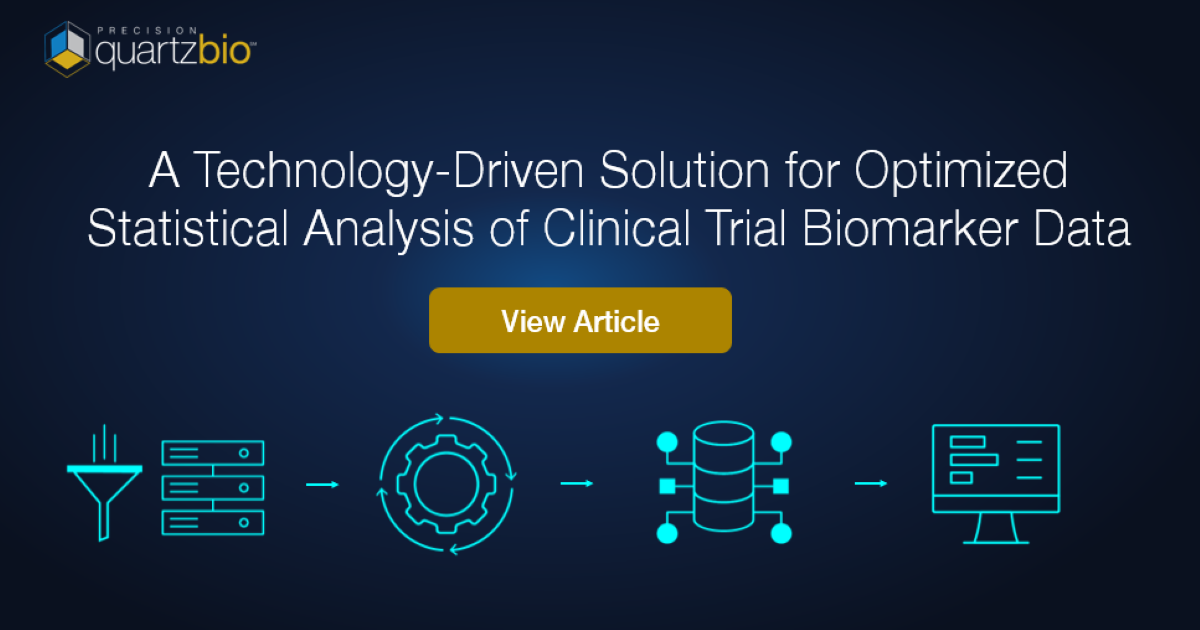
May 19, 2021 — Biomarker data generated to support clinical development has multiple roles:
- Inclusion in end-of-study regulatory submissions. As such, data must conform to FDA data exchange standards and need SDTM programming for analysis and submission.
- Supporting on-study decisions. Data must be stored in an accessible, flexibly structured format to adapt to on-study needs. These diverse needs include data visualization, mock TLFs, materials for investor meetings, posters, and reporting for safety review, data monitoring, and dosing decisions.
- Enable deep exploration to generate translational insights. Biomarker data generated during clinical trials presents opportunities for sponsors to further characterize mechanism of action and prioritize additional target pathways for their pipelines.
To achieve these goals via informative, reproducible, compliant biomarker analysis, a fully documented, easily iterated, and traceable process must be implemented throughout the entire workflow (Figure 1) — from data ingestion through final reporting.

Figure 1. Technology-based Solution for Biomarker Data Management & Statistical Analysis, Harmonized with Clinical Data Delivery
Just as EDC technology has enabled streamlined clinical data management, a technology-based solution is needed for biomarker data management.
In addition, biomarker subject matter experts and associated biomarker data management processes must provide a rigorous, agile biomarker data management system for clinical trials.
What would an ideal biomarker data management and informatics technology look like?
An ideal technology solution can harmonize disparate sources of biomarker data and store them in a centralized database. From this reliable, fully documented source of truth, subject matter experts (SME) with knowledge of specialty labs and CDISC standards can map biomarker data to the correct SDTM domain.
This approach is highly efficient because it uses effective variable mapping and reusable macros and codes. Not only are biomarker and clinical data delivered on time, after database lock, but biomarker data also yield maximum on-study insights. Clinical trial professionals and sponsors gain centralized, on-demand access to biomarker data, which help inform on-study decisions.
Technology Solutions for Processing Clinical Biomarker Data Enable Traceability and Flexibility
Ultimately, both clinical data as well as biomarker data included in FDA submissions are presented as tables, listings, and figures (TLF).
TLFs must be derived from SDTM and ADaM data sets, which support efficient replication and review of statistical methods and analyses.
As biomarker data grows in complexity and makes its way into TLFs, technology solutions for managing biomarker data become increasingly important. Only by employing automated, “end-in-mind,” fully documented pipelines at each step (data collection, data tabulation, analysis) can the SDTM and derivative ADaM yield end-of-study TLFs quickly and traceably, when timelines are critical.
We’d love to hear how your team is thinking about the evolving expectations around biomarker data, their enormous potential, and how you plan to prepare it for regulatory submission.

